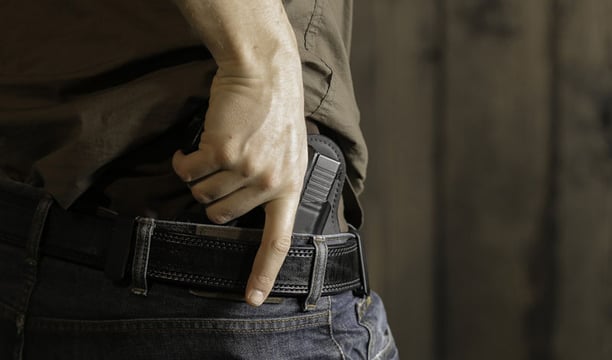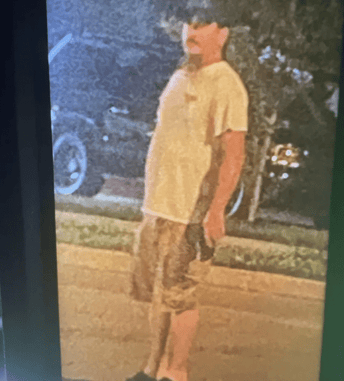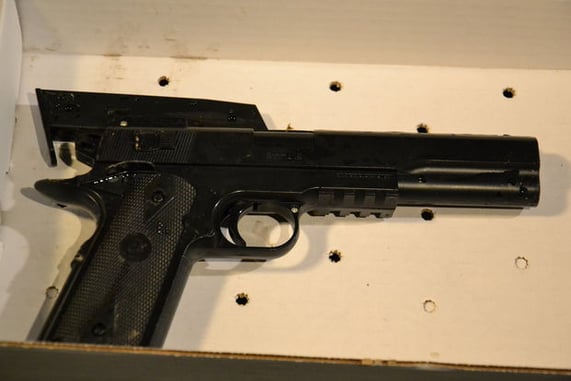Starting off, the concealed carrier needs to learn his or her ABCs. Always Be Carrying.
If you’re not an everyday carrier, you’re doing yourself a disservice right off the bat. Of course, there’s a bunch of things you’ll need to know before you head out there. Here’s an article that runs through the major bits of advice that apply to most concealed carriers.
This is by no means a comprehensive list, but it’s a great start for those new to concealed carry.
Nobody Is Looking At You Or Your Gun
If you’ve concealed your pistol, that’s the last you need to worry about it. Check in the mirror to see if you can see the clear outline of your firearm. If it looks like it could be an insulin pump or a cell phone case – chances are you don’t need to worry about it.
People are generally less aware of their surroundings than you would think. You won’t be. So you’ll be paying attention to how you look. The only other people who may also be paying attention are fellow concealed carriers, law enforcement, and the occasional member of the military. Everyone else could probably care less you have your concealed carry firearm on you will likely be oblivious if you’re printing.
A Good Holster Is As Necessary As A Good Pistol
You should get a holster will keep your concealed carry firearm accessible at all times. The second priority is that it’s concealable inside the waistband or inside a pocket holster (the most popular methods of carry).
Your holster is every bit as important as your pistol because you’re depending on both to be there when you need them. So, don’t welch out on your holster or your gun.
Get An Actual CCW Belt That Supports Your Gun
Whereas before a simple thin belt made out of canvas or leather would do – it won’t anymore. Having a pistol inside your waistline means there’s a weight dragging down. When selecting a concealed carry belt, look for the following:
- Stiff, rigid material that holds its form over time
- An example of this would be a thick leather or leather hybrid belt.
- It stays flush with your waistline no matter if you are standing or sitting.
- It’s recommend that your gun belt be two inches longer than your normal belt if you are holstering inside the waistband (IWB).
Going right along with this – you’ll probably need pants that are a bit wider, too. Tight pants will become very uncomfortable once you add your concealed carry pistol and holster to the mix.
Practice Your Draw All Day, Every Day
Your draw is more important than your range time. Obviously, don’t practice your draw in front of people or in public places. In your private time, continually practice drawing from the seated and standing position with your firearm unloaded. This will help educate you as to where your concealed carry holster needs to be. If you struggle or wiggle a lot drawing your concealed carry pistol, adjust your holster to a position where you don’t need to.
A nice, fast, fluid draw takes time and lots of practice.
Dry Fire Every Opportunity You Get
Dry firing is the quickest, easiest, cheapest way to become familiar with the mechanics of your pistol or revolver. Always ensure your firearm is completely unloaded prior to dry firing your gun. That means ejecting the magazine and checking the upper receiver for rounds.
If you’re watching TV, practice drawing and firing. If you’re waiting for the mailman to arrive at the door – draw and dry fire. Dry fire, dry fire, dry fire. Do it until everything about drawing and pulling the trigger is reflective muscle memory.
Full Metal Jacket Is For The Range – Not Your Defense

Unless state law requires you to use FMJ, don’t. Especially for calibers like 9mm, FMJ will punch straight through an actual person – meaning unless you hit a vital organ or the brain box, you’re not guaranteed a thing. Hollow points, semi-wadcutters, soft points – these are the types of ammunition you want.
You want an actual self-defense round to create a wound channel so wide you can row a kayak through it.
Don’t Worry About Show – Just Worry About Tell

Pick the caliber that suits your shooting style best. Don’t worry about what anyone else has to say about it. If you’re confident you can place a .32 caliber bullet precisely on target straight from the draw, use a gun chambered in .32. Does a .45 ACP bullet create a big hole in whatever it hits? Generally, yes. A .32 won’t. But it doesn’t matter the size of the hole you’re going to create in an attacker – it just matters that you’re confident you can put it there.
Pick a caliber you shoot best. Practice every day. Know the law. Those are the basics.
Do you have any additional tips to share? Comment below and let us know!



![3 Concealed Carry Habits to Stay Out of Jail [VIDEO]](https://imagedelivery.net/sbm_lYeJbALkepJgtmRD5w/concealednation.org/2019/04/30717816_m_stock-photos.jpg/w=728,h=381)





![[VIDEO] Armed Robber Is Surprised With Armed Employee’s Quick Response](https://imagedelivery.net/sbm_lYeJbALkepJgtmRD5w/concealednation.org/2019/09/20190911_094728.jpg/w=728,h=381)



